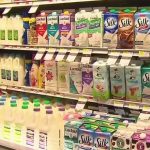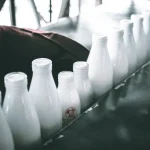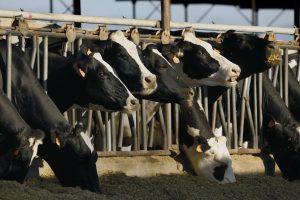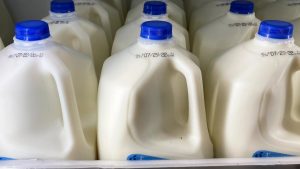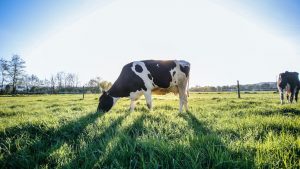
While Tulare was hit with a hard freeze just as almonds began their initial bloom, the cold weather was no deterrent for tens of thousands of visitors from across the country and world who arrived at the expo grounds to see the newest equipment innovations, watch and learn at various agricultural seminars, or visit with hundreds of agricultural service providers visiting with attendees at their booths. Rabo AgriFinance was well represented at the event, meeting with clients and media to discuss the latest market outlook and other relevant trends impacting agriculture in 2023.
Within dairy specifically, all eyes are on the milk price into the coming months, with values falling slowly but steadily recently. This price pressure, coupled with still high cost of production, will mean that some dairy farmers might struggle to achieve profitability this year. Data shows that cows’ numbers began to contract in November and December, and if margins remain tight, Rabobank expects additional declines in the herd size.
Even if cow numbers contract, Rabobank still expects stronger milk supplies this year versus 2022, likely climbing around 1% during this calendar year. This additional volume, coupled with a return to stronger production in the EU as well, means that demand will need to keep pace to avoid further milk price declines.
China’s demand, or lack thereof, will be a key global price driver this year. Their demand slowdown throughout most of 2022 has been a key contributor to weaker milk prices in recent months. As China moves past its Covid-abatement policies that lasted longer than nearly any other country, it is expected that dairy demand will climb into the second half of this year. While China’s milk production is growing, it is still expected that buyers in the country will seek dairy products for key global regions, including the US, to meet anticipated demand. China stepping back into the market to buy would be a bullish driver and would increase milk prices, with Rabobank estimating this will happen by the second half of this year.
While dairy farmer margins might be tight in the near term, expected additional demand should provide some profitability in the back half of the year. A strong spring flush is expected though with some additional culling expected before milk prices improve by summer.
Lucas Fuess is a Senior Dairy Analyst at Rabobank, where he works within Rabobank’s RaboResearch Food & Agribusiness group to monitor and evaluate dairy market events that affect food and agriculture worldwide. He discerns key insights into U.S. and global dairy markets, conducts in-depth analysis of the factors that drive sector success or failure, and examines megatrends that ultimately influence clients’ business strategies. This knowledge enables Rabobank’s wholesale clients and farmers to develop and deepen their business insights and to make well-informed strategic decisions. Before joining Rabobank in 2023, Lucas was the Director of Dairy Market Intelligence at HighGround Dairy, and prior to that began his career as an analyst and Dairy Economist at Glanbia Nutritionals. Lucas grew up on a dairy farm in Upstate New York and holds a bachelor’s degree from Cornell University, a master’s degree from Purdue University, and an MBA from the Kelley School of Business at Indiana University.

